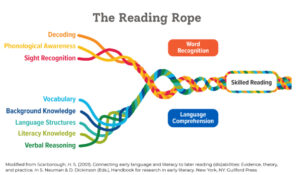Related Products
For Professionals
- Amplification
- Assessment of Student Skills, Challenges, Needs
- Early Childhood: Infants, Toddlers, Preschool
- Hearing Loss – Identification, Impact and Next Steps
- IDEA Law Summary Information
- Language and Speech Development Issues
- Legal Issues in Serving Children with Hearing Loss
- Listening (Auditory Skills) Development
- Planning to Meet Student Needs
- Self-Advocacy Skills for Students with Hearing Loss
- Self-Concept: How the Child with Hearing Loss Sees Himself
- Social Skills
- Speech Perception & Learning
Related Teacher Tools Takeout Items
The Simple View of Reading and its Implications for Literacy Acquisition in Deaf Children
The ability to read is fundamental to academic success and societal participation. While the brain is naturally wired for language acquisition, it is not innately wired for literacy skills and reading. Understanding the process of reading and its components is crucial for educators, especially when considering diverse learners such as deaf children. The Simple View of Reading, proposed by Gough and Tunmer (1986), provides a framework for understanding reading comprehension as the product of decoding and language comprehension abilities. Acknowledging the Simple View of Reading and its implications for literacy acquisition in deaf children, drawing insights from the work of the Center on Literacy and Deafness.
The Simple View of Reading:

The Simple View of Reading posits that reading comprehension is the product of two essential components: decoding and language comprehension. Decoding involves the ability to translate written symbols into spoken language, while language comprehension involves understanding the meaning of spoken or written language (Gough & Tunmer, 1986). According to this model, reading comprehension can be represented by the formula: RC = D x LC, where RC stands for reading comprehension, D for decoding, and LC for language comprehension.
Implications for Literacy Acquisition in Deaf Children:
Literacy acquisition in deaf children presents unique challenges due to their limited access to spoken language and auditory input. The Simple View of Reading offers valuable insights into understanding these challenges and designing effective interventions for deaf learners.
- Decoding Challenges: Deaf children often face difficulties with decoding due to their reliance on visual forms of communication, such as sign language or written language. While sign language provides a rich linguistic input, the transition to reading written text can be challenging. Research by the Center on Literacy and Deafness suggests that explicit instruction in phonological awareness and phonics is essential for developing decoding skills in deaf children (Paul, 2008). Teachers need to provide explicit instruction in letter-sound correspondence and decoding strategies tailored to the unique needs of deaf learners.
- Language Comprehension: Language comprehension is another critical component of reading comprehension. Deaf children may experience delays in language development, which can impact their ability to understand written text. The Center on Literacy and Deafness emphasizes the importance of fostering language development through exposure to rich language input and meaningful interactions (Mayer, 2007). Teachers should provide ample opportunities for deaf children to engage in discussions, storytelling, and other language-rich activities to support their language comprehension skills.
|
How can a TOD and SLP help enrich literacy skills in a 30 min session? -Increase background knowledge by using videos, hands on materials, provide conceptually similar books -Provide supplement to phonics with Visual Phonics |
- Integration of Visual and Linguistic Cues:For deaf children,
visual cues play a significant role in reading comprehension. The Simple View of Reading underscores the importance of integrating visual and linguistic cues to support reading comprehension (Luckner & Handley, 2008). Teachers can use visual supports such as pictures, diagrams, and graphic organizers to enhance comprehension and make abstract concepts more accessible to deaf learners.
The Simple View of Reading provides a valuable framework for understanding the process of reading comprehension and its implications for literacy acquisition in deaf children. By addressing the unique challenges faced by deaf learners in decoding and language comprehension, educators can design effective interventions to support their literacy development. Through collaboration between researchers, educators, and families, we can ensure that all deaf children have access to high-quality literacy instruction that empowers them to succeed academically and beyond.
